
A tornado is a violently rotating column of air that is in contact with both the surface of the Earth and a cumulonimbus cloud or, in rare cases, the base of a cumulus cloud. It is often referred to as a twister, whirlwind or cyclone, although the word cyclone is used in meteorology to name a weather system with a low-pressure area in the center around which, from an observer looking down toward the surface of the Earth, winds blow counterclockwise in the Northern Hemisphere and clockwise in the Southern. Tornadoes come in many shapes and sizes, and they are often visible in the form of a condensation funnel originating from the base of a cumulonimbus cloud, with a cloud of rotating debris and dust beneath it. Most tornadoes have wind speeds less than 180 kilometers per hour, are about 80 meters across, and travel several kilometers before dissipating. The most extreme tornadoes can attain wind speeds of more than 480 kilometers per hour (300 mph), are more than 3 kilometers (2 mi) in diameter, and stay on the ground for more than 100 km (62 mi).

NEXRAD or Nexrad is a network of 159 high-resolution S-band Doppler weather radars operated by the National Weather Service (NWS), an agency of the National Oceanic and Atmospheric Administration (NOAA) within the United States Department of Commerce, the Federal Aviation Administration (FAA) within the Department of Transportation, and the U.S. Air Force within the Department of Defense. Its technical name is WSR-88D.

This article lists various tornado records. The most "extreme" tornado in recorded history was the Tri-State tornado, which spread through parts of Missouri, Illinois, and Indiana on March 18, 1925. It is considered an F5 on the Fujita Scale, holds records for longest path length at 219 miles (352 km), longest duration at about 3+1⁄2 hours, and it held the fastest forward speed for a significant tornado at 73 mph (117 km/h) anywhere on Earth until 2021. In addition, it is the deadliest single tornado in United States history with 695 fatalities. It was also the third most costly tornado in history at the time, when costs are normalized for wealth and inflation, it still ranks third today.

Weather radar, also called weather surveillance radar (WSR) and Doppler weather radar, is a type of radar used to locate precipitation, calculate its motion, and estimate its type. Modern weather radars are mostly pulse-Doppler radars, capable of detecting the motion of rain droplets in addition to the intensity of the precipitation. Both types of data can be analyzed to determine the structure of storms and their potential to cause severe weather.
The National Severe Storms Laboratory (NSSL) is a National Oceanic and Atmospheric Administration (NOAA) weather research laboratory under the Office of Oceanic and Atmospheric Research. It is one of seven NOAA Research Laboratories (RLs).
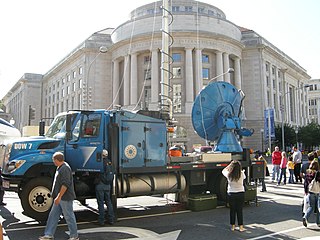
Doppler on Wheels is a fleet of X-band and C-band mobile and quickly-deployable truck-borne radars which are the core instrumentation of the Flexible Array of Radars and Mesonets affiliated with the University of Illinois and led by Joshua Wurman, with the funding partially provided by the National Science Foundation (NSF), as part of the "Community Instruments and Facilities," (CIF) program. The DOW fleet and its associated Mobile Mesonets and deployable weather stations have been used throughout the United States since 1995, as well as occasionally in Europe and Southern America. The Doppler on Wheels network has deployed itself through hazardous and challenging weather to gather data and information that may be missed by conventional stationary radar systems.
Convective storm detection is the meteorological observation, and short-term prediction, of deep moist convection (DMC). DMC describes atmospheric conditions producing single or clusters of large vertical extension clouds ranging from cumulus congestus to cumulonimbus, the latter producing thunderstorms associated with lightning and thunder. Those two types of clouds can produce severe weather at the surface and aloft.
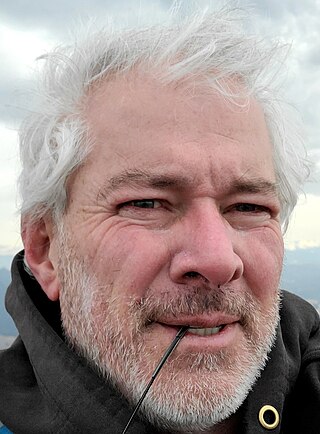
Joshua Michael Aaron Ryder Wurman is an American atmospheric scientist and inventor noted for tornado, tropical cyclone, and weather radar research, the invention of DOW and bistatic radar multiple-Doppler networks.

The Verification of the Origins of Rotation in Tornadoes Experiment are field experiments that study tornadoes. VORTEX1 was the first time scientists completely researched the entire evolution of a tornado with an array of instrumentation, enabling a greater understanding of the processes involved with tornadogenesis. A violent tornado near Union City, Oklahoma was documented in its entirety by chasers of the Tornado Intercept Project (TIP) in 1973. Their visual observations led to advancement in understanding of tornado structure and life cycles.
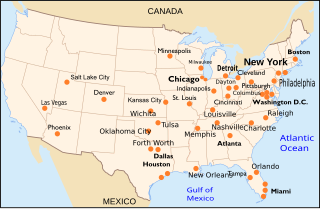
Terminal Doppler Weather Radar (TDWR) is a Doppler weather radar system with a three-dimensional "pencil beam" used primarily for the detection of hazardous wind shear conditions, precipitation, and winds aloft on and near major airports situated in climates with great exposure to thunderstorms in the United States. As of 2011, all were in-service with 45 operational radars, some covering multiple airports in major metropolitan locations, across the United States & Puerto Rico. Several similar weather radars have also been sold to other countries such as China (Hong Kong). Funded by the United States Federal Aviation Administration (FAA), TDWR technology was developed in the early 1990s at Lincoln Laboratory, part of the Massachusetts Institute of Technology, to assist air traffic controllers by providing real-time wind shear detection and high-resolution precipitation data.

TWISTEX was a tornado research experiment that was founded and led by Tim Samaras of Bennett, Colorado, US, that ended in the deaths of three researchers in the 2013 El Reno tornado. The experiment announced in 2015 that there were some plans for future operations, but no additional information has been announced since.
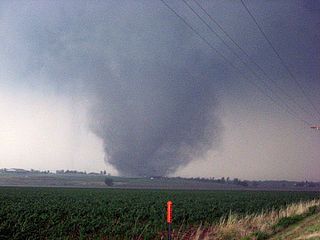
From May 21 to May 26, 2011, one of the largest tornado outbreaks on record affected the Midwestern and Southern regions of the United States. A six-day tornado outbreak sequence, most of the tornadoes developed in a corridor from Lake Superior southwest to central Texas, while isolated tornadoes occurred in other areas. An especially destructive EF5 tornado destroyed one-third of Joplin, Missouri, resulting in 158 deaths and over 1,000 injuries. The Joplin tornado was the deadliest in the United States since April 9, 1947, when an intense tornado killed 181 in the Woodward, Oklahoma, area. Tornado-related deaths also occurred in Arkansas, Kansas, Minnesota, and Oklahoma. Overall, the tornado outbreak resulted in 186 deaths, 8 of those non-tornadic, making it second only to the 2011 Super Outbreak as the deadliest since 1974. It was the second costliest tornado outbreak in United States history behind that same April 2011 outbreak, with insured damage estimated at $4–7 billion.

During the early evening of Friday, May 31, 2013, an extremely large and powerful tornado occurred over rural areas of Central Oklahoma. This rain-wrapped, multiple-vortex tornado was the widest tornado ever recorded and was part of a larger weather system that produced dozens of tornadoes over the preceding days. The tornado initially touched down at 6:03 p.m. Central Daylight Time (2303 UTC) about 8.3 miles (13.4 km) west-southwest of El Reno, rapidly growing in size and becoming more violent as it tracked through central portions of Canadian County. Remaining over mostly open terrain, the tornado did not impact many structures; however, measurements from mobile weather radars revealed extreme winds up to 150 m/s within the vortex. These are among the highest observed wind speeds on Earth, just slightly lower than the wind speeds of the 1999 Bridge Creek–Moore tornado. As it crossed U.S. 81, it had grown to a record-breaking width of 2.6 miles (4.2 km), beating the previous width record set in 2004. Turning northeastward, the tornado soon weakened. Upon crossing Interstate 40, the tornado dissipated around 6:43 p.m. CDT (2343 UTC), after tracking for 16.2 miles (26.1 km), it avoided affecting the more densely populated areas near and within the Oklahoma City metropolitan area.
The following is a glossary of tornado terms. It includes scientific as well as selected informal terminology.

Multifunction Phased Array Radar (MPAR) was an experimental Doppler radar system that utilized phased array technology. MPAR could scan at angles as high as 60 degrees in elevation, and simultaneously track meteorological phenomena, biological flyers, non-cooperative aircraft, and air traffic. From 2003 through 2016, there was one operational MPAR within the mainland United States—a repurposed AN/SPY-1A radar set loaned to NOAA by the U.S. Navy. The MPAR was decommissioned and removed in 2016.
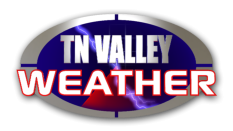
Tennessee Valley Weather is a television station owned by Tennessee Valley Media Group, headquartered in Lawrenceburg, Tennessee. It services North Alabama, Southern Tennessee, and Northeast Mississippi with daily weather updates and local severe weather information. The combined network broadcasts over-the-air updates, social media posts, and produces live content on a digital streaming television channel available on a host of Internet based platforms, as well as local cable providers.
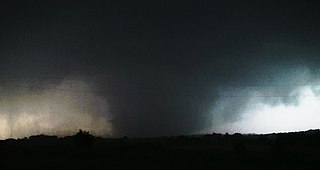
The 2011 El Reno–Piedmont tornado was a long-tracked and deadly EF5 tornado that struck central Oklahoma on the evening of May 24, 2011. The tornado impacted areas near or within the communities of El Reno, Piedmont, and Guthrie, killing nine and injuring 181. After producing incredible damage in several locations along a path of more than 60 miles (97 km), the El Reno–Piedmont tornado was given a rating of EF5, the highest category on the Enhanced Fujita scale. It was the first tornado rated EF5 or F5 to strike Oklahoma since the 1999 Bridge Creek–Moore tornado. A mobile radar found that the tornado possessed possible wind speeds of up to 295 mph (475 km/h).
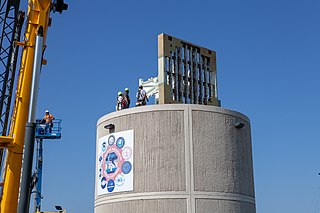
Advanced Technology Demonstrator (ATD) is an experimental weather radar system using Phased Array technology seeking to enhance Phased Array capabilities with the addition of dual-polarity and pulse compression. Its predecessor, MPAR, was the first large-scale PAR experiment taken on by NOAA in 2003, and was deployed until its eventual decommission in favor of ATD in 2016.

Dušan S. Zrnić is an American engineer of Yugoslav origin, head of the Doppler Weather Radar and Remote Sensing Research Group at the National Severe Storms Laboratory (NSSL) as well as assistant professor of electrical engineering and meteorology at the University of Oklahoma in Norman, Oklahoma. His research interests include circuit design, applied mathematics, magnetohydrodynamics, radar signal processing, and systems design.

A descending reflectivity core (DRC), sometimes referred to as a blob, is a meteorological phenomenon observed in supercell thunderstorms, characterized by a localized, small-scale area of enhanced radar reflectivity that descends from the echo overhang into the lower levels of the storm. Typically found on the right rear flank of supercells, DRCs are significant for their potential role in the development or intensification of low-level rotation within these storms. The descent of DRCs has been associated with the formation and evolution of hook echoes, a key radar signature of supercells, suggesting a complex interplay between these cores and storm dynamics.

















